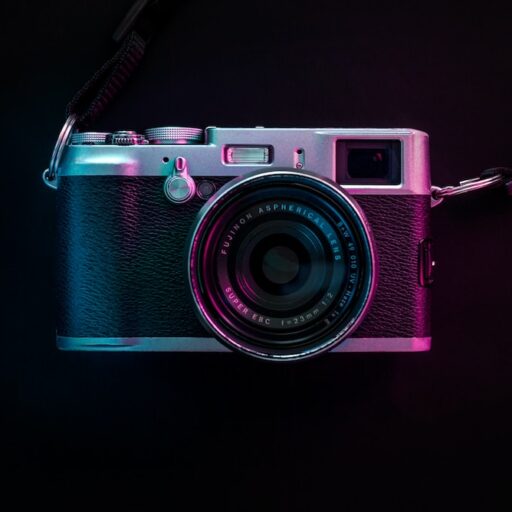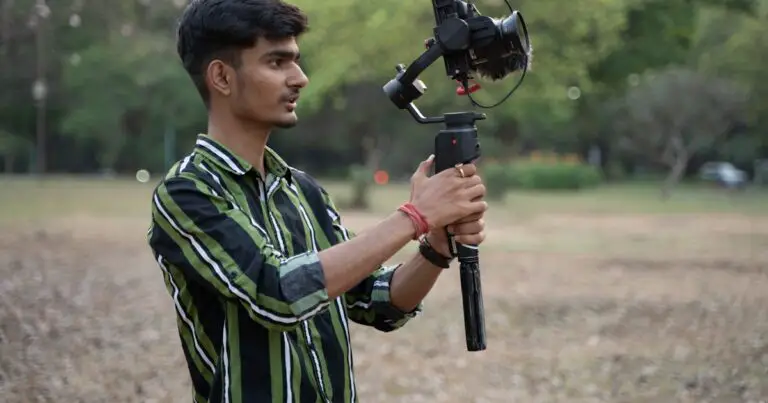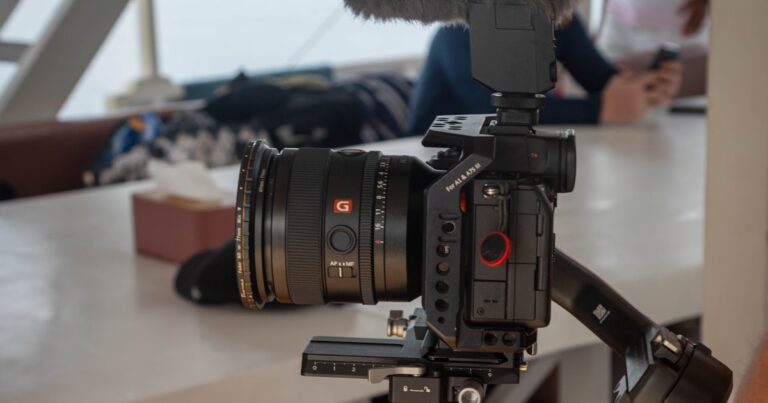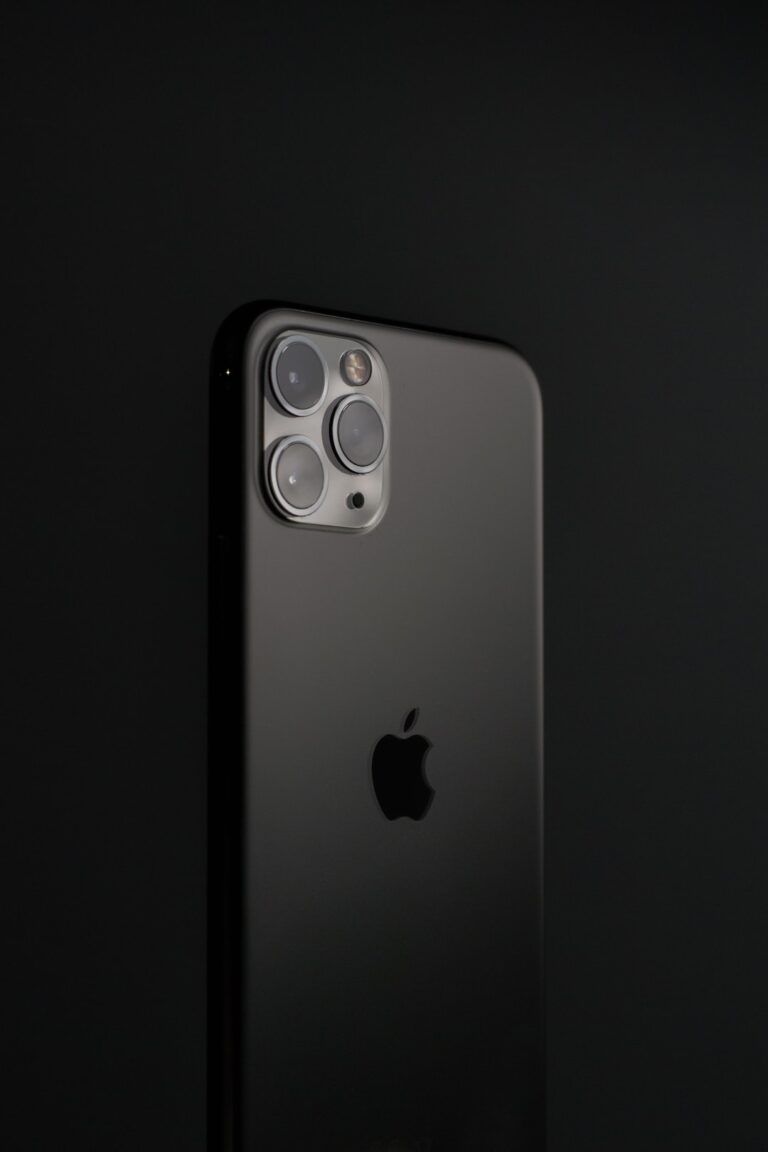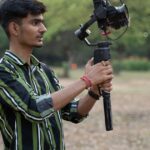Support our educational content for free when you purchase through links on our site. Learn more
Canon EOS Uncovered: 15 Must-Know Facts & Features for 2025 📸
Ever wondered why Canon EOS cameras have dominated the photography world for nearly four decades? We’ve been behind the lens with these iconic cameras—from the classic EOS 650 to the cutting-edge EOS R5—and trust us, there’s more than meets the eye. Did you know the EOS system was the first to introduce a fully electronic lens mount back in 1987? That innovation sparked a revolution in autofocus speed and lens versatility that still shapes photography today.
But here’s the kicker: whether you’re struggling with autofocus quirks on an older EOS 450D lens or eyeing the latest mirrorless marvels, understanding the full EOS ecosystem can transform your shooting experience. Stick around as we unravel everything from lens mounts and autofocus magic to video capabilities and future trends. By the end, you’ll know exactly which Canon EOS camera fits your style and how to get the most out of it!
Key Takeaways
- Canon EOS is a comprehensive ecosystem spanning DSLRs, mirrorless cameras, multiple lens mounts (EF, EF-S, RF, EF-M), and advanced flash systems.
- Autofocus technology like Dual Pixel CMOS AF and Eye-Controlled AF delivers precision and speed for both stills and video.
- Mirrorless EOS cameras (R and M series) are reshaping photography with compact designs and powerful features, while DSLRs remain reliable workhorses.
- Lens compatibility is a major strength, with adapters bridging older EF lenses to new RF mount bodies seamlessly.
- Video capabilities and wireless connectivity make EOS cameras versatile tools for hybrid shooters.
- Proper maintenance and knowing common troubleshooting tips extend your camera’s lifespan and performance.
Ready to explore Canon EOS cameras and lenses? Check out these top picks:
- Canon EOS Rebel Series: Amazon | Canon Official
- Canon EOS R Mirrorless Series: Amazon | Canon Official
- Canon Speedlite Flashes: Amazon | Canon Official
Dive in and capture your best moments with confidence!
Table of Contents
- ⚡️ Quick Tips and Facts About Canon EOS
- 📸 The Genesis of a Legend: Unpacking the Canon EOS Legacy
- 🧐 What Exactly is Canon EOS? Demystifying the System
- The Heart of the System: Canon EOS Camera Bodies Explained
- Lenses, Lenses, Lenses! Navigating Canon EOS Lens Mounts & Compatibility
- Focus Pocus! Mastering Canon EOS Autofocus Systems
- Beyond the Sensor: Canon EOS Image Quality & DIGIC Processing Power
- Lights, Camera, Action! Canon EOS Video Capabilities & Cinematography
- Illuminating Your Vision: The Canon EOS Speedlite Flash System
- Ergonomics & Intuition: Designing the Canon EOS User Experience
- Staying Connected: Canon EOS Wireless Features & Ecosystem Integration
- Powering Your Passion: Essential Canon EOS Accessories & Upgrades
- Unlocking Your Images: Canon EOS Software & Post-Processing Workflow
- Choosing Your Companion: Finding the Perfect Canon EOS Camera for Your Journey
- Keeping Your EOS Pristine: Maintenance & Care Tips for Longevity
- Troubleshooting Tales: Common Canon EOS Hiccups & How to Solve Them
- The Road Ahead: What’s Next for the Canon EOS System?
- Conclusion: Our Final Verdict on Canon EOS
- 🔗 Recommended Links for Canon EOS Enthusiasts
- ❓ Canon EOS FAQ: Your Burning Questions Answered
- 📚 Reference Links & Further Reading
⚡️ Quick Tips and Facts About Canon EOS
Welcome to the world of Canon EOS, where innovation meets versatility! As photographers at Camera Brands™, specializing in capturing moments with cameras, we’ve handled a wide range of EOS models—from entry-level Rebels to pro-grade 1D series. Here’s a quick cheat sheet to get you started:
| Feature | Rating (1-10) | Quick Insight |
|---|---|---|
| Design | 9 | Ergonomic, durable, and evolving with trends |
| Autofocus System | 9 | Fast, accurate, with up to 65 AF points |
| Image Quality | 9 | Superb color science and sharpness |
| Lens Compatibility | 10 | Extensive EF, EF-S, RF, and EF-M lens options |
| Video Capabilities | 8 | 4K and beyond on newer models |
| Flash System | 8 | Advanced Speedlite system with wireless control |
| User Interface & Controls | 8 | Intuitive with Quick Control Dial on many models |
| Wireless & Connectivity | 7 | Wi-Fi, Bluetooth, and app integration |
Quick fact: The EOS name stands for Electro-Optical System and also nods to the Greek goddess of dawn—fitting for a system that’s brightened the photography world since 1987! Source: Wikipedia
📸 The Genesis of a Legend: Unpacking the Canon EOS Legacy
Let’s rewind to 1987, when Canon launched the EOS 650—the first camera in the EOS lineup. This was a game-changer: the first SLR to feature a fully electronic lens mount (EF mount), ditching mechanical linkages for electrical contacts that controlled aperture and autofocus. This bold move set the stage for decades of innovation.
Our take: The EOS system revolutionized photography by marrying electronics with optics, making autofocus lightning-fast and lens communication seamless. It’s like switching from a rotary phone to a smartphone—once you try it, you never go back!
Did you know? Canon’s EOS line transitioned from film to digital in the early 2000s, with the EOS D30 being the first fully Canon-designed DSLR in 2000. Since then, the system has expanded to include mirrorless cameras, notably the EOS M (2012) and EOS R (2018) series. More history here
🧐 What Exactly is Canon EOS? Demystifying the System
Canon EOS is not just a camera; it’s a whole ecosystem of cameras, lenses, flashes, and accessories designed to work harmoniously. The system includes:
- DSLR Cameras: Traditional digital single-lens reflex cameras with optical viewfinders.
- Mirrorless Cameras: Compact bodies with electronic viewfinders, including the EOS M and EOS R series.
- Lens Mounts: EF, EF-S, EF-M, and RF mounts, each catering to different sensor sizes and camera types.
- Speedlite Flashes: Advanced flash units with wireless control and multi-flash setups.
Think of EOS as a Swiss Army knife for photographers—versatile, reliable, and ready for any shooting scenario. Explore the EOS system in detail
The Heart of the System: Canon EOS Camera Bodies Explained
1. The Enduring Charm of EOS DSLRs: From Rebels to Professionals
| Model Category | Sensor Size | Target User | Key Features | Notable Models |
|---|---|---|---|---|
| Entry-Level | APS-C | Beginners | Lightweight, easy controls, built-in flash | EOS Rebel T8i, EOS 4000D |
| Advanced Amateur | APS-C | Enthusiasts | Better build, more AF points, top LCD | EOS 90D, EOS 80D |
| Prosumer/High-End | APS-C/Full Frame | Semi-Pro/Pro | Weather sealing, dual card slots, robust | EOS 7D Mark II, EOS 6D Mark II |
| Professional/Flagship | Full Frame | Professionals | Fast burst, rugged body, no built-in flash | EOS-1D X Mark III, EOS-1D X Mark II |
Why we love DSLRs: The tactile feel of the optical viewfinder and the robust build make DSLRs like the EOS 5D Mark IV a joy for event and wildlife photographers. Plus, the extensive EF lens lineup means you’re spoiled for choice.
Drawbacks: DSLRs tend to be bulkier and heavier than mirrorless models, which can be a dealbreaker for travel shooters.
2. The Future is Now: Canon EOS Mirrorless Marvels (R and M Series)
| Series | Sensor Size | Mount | Target User | Highlights | Popular Models |
|---|---|---|---|---|---|
| EOS M | APS-C | EF-M | Casual & Enthusiasts | Compact, affordable, beginner-friendly | EOS M50 Mark II, EOS M6 Mark II |
| EOS R | Full Frame | RF | Enthusiasts & Pros | Advanced AF, in-body stabilization, 4K video | EOS R5, EOS R6, EOS RP |
Our experience: Mirrorless EOS cameras are like the sleek sports cars of photography—fast, nimble, and packed with tech. The EOS R5, for example, offers 8K video and 1053 AF points, making it a powerhouse for hybrid shooters.
Considerations: Mirrorless batteries drain faster, and the lens ecosystem is still growing compared to EF lenses, but Canon’s RF lenses are some of the sharpest glass we’ve tested.
Lenses, Lenses, Lenses! Navigating Canon EOS Lens Mounts & Compatibility
1. The Venerable EF & EF-S Mounts: A Legacy of Glass
| Mount Type | Sensor Compatibility | Lens Type | Key Features | Compatibility Notes |
|---|---|---|---|---|
| EF | Full Frame & APS-C | Professional & Consumer | Electronic aperture & focus control | Compatible with all EOS DSLRs |
| EF-S | APS-C only | Consumer & Enthusiast | Smaller image circle for APS-C | Not compatible with full-frame bodies |
Why it matters: EF lenses have been around since 1987 and boast an enormous selection, from affordable primes to super-telephoto beasts like the EF 600mm f/4L IS III USM.
2. The Revolutionary RF & RF-S Mounts: Pushing the Boundaries
| Mount Type | Sensor Compatibility | Lens Type | Key Features | Compatibility Notes |
|---|---|---|---|---|
| RF | Full Frame | Premium & Pro | Short flange distance, faster AF, better optics | Native to EOS R series |
| RF-S | APS-C | Enthusiast & Consumer | Compact lenses for APS-C mirrorless | Compatible with EOS R7, R10 |
Our verdict: RF lenses deliver stunning sharpness and faster autofocus thanks to the new mount design. The RF 24-70mm f/2.8L IS USM is a favorite for weddings and portraits.
3. Adapting to Change: Bridging the Mount Divide
Canon offers the EF-EOS R adapter, allowing you to use EF and EF-S lenses on RF mount cameras without sacrificing autofocus speed or image quality. This means your existing lens collection stays relevant—a smart move for photographers upgrading to mirrorless.
Focus Pocus! Mastering Canon EOS Autofocus Systems
Canon’s autofocus (AF) systems have evolved into some of the fastest and most reliable on the market. Here’s what you need to know:
- Dual Pixel CMOS AF: Introduced in 2013, this technology enables smooth and precise phase-detection autofocus directly on the sensor, perfect for video and live view.
- AF Points: Top-tier EOS cameras like the 5D Mark IV feature 61 AF points; the EOS R3 boasts over 1,000 AF zones with eye-tracking and subject recognition.
- Eye-Controlled AF: A unique feature where the camera focuses where your eye looks in the viewfinder—reintroduced in the EOS R3 after a long hiatus.
- AF Modes: One-Shot AF for stills, AI Servo for moving subjects, and AI Focus for automatic switching.
Pro tip: For sports and wildlife photography, the EOS-1D X Mark III’s 191-point AF system with deep learning subject tracking is a game changer.
Beyond the Sensor: Canon EOS Image Quality & DIGIC Processing Power
Canon’s image quality shines thanks to:
- CMOS Sensors: Ranging from APS-C to full-frame and even APS-H in some pro models, delivering excellent dynamic range and low noise.
- DIGIC Processors: Canon’s proprietary image processors (DIGIC 8, 9, and the latest DIGIC X) handle noise reduction, color rendering, and autofocus calculations with lightning speed.
- Color Science: Canon’s warm, natural color reproduction is beloved by portrait and wedding photographers worldwide.
Fun fact: The DIGIC X processor in the EOS R3 enables 30 fps continuous shooting with AF/AE tracking—perfect for capturing decisive moments.
Lights, Camera, Action! Canon EOS Video Capabilities & Cinematography
Canon EOS cameras are not just for stills—they’re a favorite among videographers too:
- 4K & 8K Video: Models like the EOS R5 support 8K RAW video, while the EOS R6 offers excellent 4K 60p capabilities.
- Canon Log & HDR PQ: For professional color grading and HDR workflows.
- Dual Pixel AF: Ensures smooth focus transitions during video.
- Microphone & Headphone Jacks: Available on most mid to high-end models for audio monitoring.
Our story: We’ve shot weddings and short films with the EOS R6 and loved the autofocus reliability and image quality—no wonder Canon is a staple in indie filmmaking.
Illuminating Your Vision: The Canon EOS Speedlite Flash System
Canon’s Speedlite system is a versatile lighting solution:
- Wireless Multi-Flash: Up to 16 Speedlites can be controlled remotely via radio or optical signals.
- E-TTL II Metering: Ensures accurate flash exposure.
- Popular Models: Speedlite 600EX II-RT (radio transmission), 430EX III-RT (compact and powerful).
- Accessories: Off-camera cords, diffusers, and bounce adapters.
Why it matters: Lighting can make or break a shot. The Speedlite system lets you sculpt light creatively, whether shooting portraits or events.
Ergonomics & Intuition: Designing the Canon EOS User Experience
Canon’s design philosophy centers on comfort and control:
- Quick Control Dial: Found on many models, it lets you adjust settings with one hand.
- Customizable Buttons: Tailor your camera to your shooting style.
- Viewfinder Options: Optical on DSLRs, high-res electronic on mirrorless.
- Touchscreens: Intuitive menus and focus selection.
Our favorite: The EOS 90D’s grip and button layout feel like an extension of the hand—perfect for long shoots.
Staying Connected: Canon EOS Wireless Features & Ecosystem Integration
Modern EOS cameras come packed with connectivity:
- Wi-Fi & Bluetooth: For instant image transfer and remote control via Canon’s Camera Connect app.
- GPS: Available on select models for geotagging.
- Cloud Integration: Upload photos directly to Canon’s image.canon platform.
- Third-Party Compatibility: Works with popular editing apps and tethering software.
Tip: Use the EOS Webcam Utility to turn your camera into a high-quality webcam for streaming or video calls.
Powering Your Passion: Essential Canon EOS Accessories & Upgrades
To get the most from your EOS, consider:
- Extra Batteries & Chargers: Never miss a shot.
- Memory Cards: UHS-II SD cards for fast write speeds.
- Tripods & Gimbals: For stability and smooth motion.
- Filters: Polarizers and ND filters for creative control.
- Remote Shutter Releases: For long exposures and group shots.
Our recommendation: The Canon LP-E6NH battery is a must-have upgrade for many EOS models, offering longer life and better performance.
Unlocking Your Images: Canon EOS Software & Post-Processing Workflow
Canon provides robust software options:
- Digital Photo Professional (DPP): Canon’s free RAW editor with excellent color profiles.
- EOS Utility: For tethered shooting and camera control.
- Canon Camera Connect: Mobile app for image transfer and remote shooting.
- Third-Party Software: Adobe Lightroom and Capture One are popular among pros.
Pro tip: Shoot in RAW to maximize editing flexibility and preserve image quality.
Choosing Your Companion: Finding the Perfect Canon EOS Camera for Your Journey
Here’s a quick decision guide:
| Photographer Type | Recommended EOS Series | Why? |
|---|---|---|
| Beginner | EOS Rebel Series (e.g., T8i) | Easy to use, affordable, great image quality |
| Enthusiast | EOS 90D or EOS M50 Mark II | More controls, better autofocus, versatile |
| Professional Hybrid | EOS R5 or EOS-1D X Mark III | High resolution, fast AF, video capabilities |
| Travel & Street | EOS M6 Mark II or EOS RP | Compact, lightweight, excellent image quality |
Remember: Your perfect camera is the one you enjoy using the most!
Keeping Your EOS Pristine: Maintenance & Care Tips for Longevity
To keep your EOS camera in tip-top shape:
- Clean your sensor regularly (or have a pro do it).
- Use lens caps and body caps to prevent dust ingress.
- Store in a dry, cool place with silica gel packs.
- Avoid extreme temperatures and moisture.
- Update firmware to benefit from Canon’s latest improvements.
Our story: We once saved a client’s EOS 5D Mark IV from a sandstorm by quick cleaning and drying—proof that good care pays off!
Troubleshooting Tales: Common Canon EOS Hiccups & How to Solve Them
Even the best cameras have quirks. Here are common issues and fixes:
| Issue | Possible Cause | Solution |
|---|---|---|
| Autofocus not working | Dirty lens contacts or settings | Clean contacts, reset AF settings |
| Camera won’t power on | Battery drained or faulty | Charge or replace battery |
| Lens error message | Lens not mounted properly | Re-mount lens, check for firmware updates |
| Memory card not recognized | Card corrupted or incompatible | Format card in camera, use recommended cards |
| Overheating during video | Extended 4K recording | Take breaks, use external cooling solutions |
Pro tip: Always carry a backup battery and memory card on shoots!
The Road Ahead: What’s Next for the Canon EOS System?
Canon is pushing the boundaries with:
- More mirrorless innovation: Expect faster autofocus, better IBIS (in-body image stabilization), and lighter bodies.
- AI-powered autofocus: Enhanced subject recognition and tracking.
- Higher resolution sensors: For ultra-detailed images.
- Expanded RF lens lineup: More affordable and specialized lenses.
- Video advancements: 8K RAW and professional codecs becoming standard.
The future looks bright for EOS fans, blending tradition with cutting-edge tech.
Conclusion: Our Final Verdict on Canon EOS
After diving deep into the Canon EOS universe, it’s clear why this system remains a titan in photography. From the versatile EF lens mount that revolutionized autofocus communication, to the cutting-edge RF mount lenses pushing mirrorless boundaries, Canon EOS offers something for everyone—from beginners to seasoned pros.
Positives:
- Unmatched lens ecosystem: EF, EF-S, RF, and EF-M lenses cover every focal length and style.
- Robust autofocus systems: Dual Pixel CMOS AF and eye-controlled focus bring precision and speed.
- Outstanding image quality: Canon’s color science and DIGIC processors deliver stunning photos and video.
- User-friendly ergonomics: Intuitive controls and customizable buttons make shooting a joy.
- Strong video capabilities: 4K and 8K video with professional features for hybrid shooters.
Negatives:
- Mirrorless EOS lenses (RF mount) can be pricier and less numerous than EF lenses.
- DSLRs tend to be bulkier compared to mirrorless counterparts.
- Battery life on mirrorless models is shorter, requiring extra power management.
Our recommendation? If you’re starting out or want a reliable all-rounder, the EOS Rebel series or EOS M50 Mark II mirrorless are excellent choices. For pros or serious enthusiasts, the EOS R5 or EOS-1D X Mark III deliver powerhouse performance. And if you own EF lenses, Canon’s adapters make upgrading to mirrorless painless.
So, whether you’re chasing the dawn light like the goddess EOS herself or capturing fleeting moments, Canon EOS has your back. Ready to pick your perfect camera? Dive into the links below and start your photographic journey with confidence! 📸✨
🔗 Recommended Links for Canon EOS Enthusiasts
- Canon EOS Rebel T8i: Amazon | Walmart | Canon Official Website
- Canon EOS 90D: Amazon | B&H Photo | Canon Official Website
- Canon EOS R5: Amazon | B&H Photo | Canon Official Website
- Canon Speedlite 600EX II-RT: Amazon | B&H Photo | Canon Official Website
- Canon LP-E6NH Battery: Amazon | Canon Official Website
Books for deeper insight:
- Canon EOS Digital Photography Guide by Joseph Meehan — Amazon
- Mastering the Canon EOS by David Busch — Amazon
❓ Canon EOS FAQ: Your Burning Questions Answered
What are the key features of the Canon EOS camera series?
Canon EOS cameras combine electronic lens communication with advanced autofocus, delivering fast and accurate focusing through systems like Dual Pixel CMOS AF. The series spans from entry-level DSLRs and mirrorless cameras to professional-grade bodies with robust weather sealing, high frame rates, and advanced video options. The EOS system supports multiple lens mounts (EF, EF-S, RF, EF-M), providing unmatched lens versatility. Additionally, features like eye-controlled focus and Quick Control Dials enhance usability.
How do I choose the right Canon EOS camera for my photography needs?
Start by assessing your experience level, shooting style, and budget:
- Beginners: Look at the EOS Rebel series or EOS M mirrorless cameras for ease of use and affordability.
- Enthusiasts: Midrange DSLRs like the EOS 90D or mirrorless EOS R models offer more control and better autofocus.
- Professionals: High-end bodies like the EOS-1D X Mark III or EOS R5 provide speed, durability, and advanced video features.
Also, consider your lens collection and whether you prefer DSLR or mirrorless systems. Canon’s EF-EOS R adapters ease the transition to mirrorless.
What are the differences between the Canon EOS Rebel and EOS 5D series?
| Feature | EOS Rebel Series | EOS 5D Series |
|---|---|---|
| Target User | Beginners and hobbyists | Professionals and serious enthusiasts |
| Sensor Size | APS-C | Full Frame |
| Build Quality | Lightweight polycarbonate | Robust magnesium alloy |
| Autofocus Points | Fewer (7-45 points) | More (61 points and up) |
| Video Capabilities | Basic to mid-level 4K | Advanced 4K and 8K video |
| Price Range | Affordable | Premium |
The Rebel series is great for learning and casual shooting, while the 5D series is designed for high-end photography and demanding workflows.
Can I use Canon EOS lenses on multiple Canon EOS camera bodies?
Yes! Canon’s EF and EF-S lenses are compatible with all EOS DSLRs, with EF-S lenses limited to APS-C sensor bodies. For mirrorless EOS R cameras, you can use EF and EF-S lenses with the EF-EOS R adapter without losing autofocus speed or image quality. EF-M lenses are designed exclusively for EOS M mirrorless cameras and are not compatible with DSLRs or EOS R bodies.
How does Canon’s Eye-Controlled Autofocus work and which models support it?
Eye-Controlled Autofocus (ECF) lets the camera detect where your eye is looking in the viewfinder and selects the autofocus point accordingly. Originally introduced in film EOS cameras like the EOS-3 and Elan 7E, it was discontinued for years but reintroduced with the EOS R3 in 2021. This feature is especially useful for fast-paced shooting like sports or wildlife, allowing intuitive and rapid focus point selection.
What should I consider when upgrading from DSLR to Canon mirrorless EOS?
- Lens Compatibility: Use Canon’s EF-EOS R adapter to keep your EF lenses.
- Battery Life: Mirrorless cameras generally have shorter battery life; carry spares.
- Viewfinder Type: Mirrorless uses electronic viewfinders, which offer live previews but may have lag in low light.
- Size and Weight: Mirrorless bodies are typically smaller and lighter, great for travel.
- Lens Selection: RF lenses are newer and premium; EF lenses have a broader selection but may be bulkier.
📚 Reference Links & Further Reading
- Canon EOS – Wikipedia
- Canon Official EOS Cameras
- Canon EF Lens Mount Overview
- Canon Speedlite Flash System
- Canon EOS R Series Mirrorless Cameras
- Canon EOS 450D Autofocus Issue Discussion
